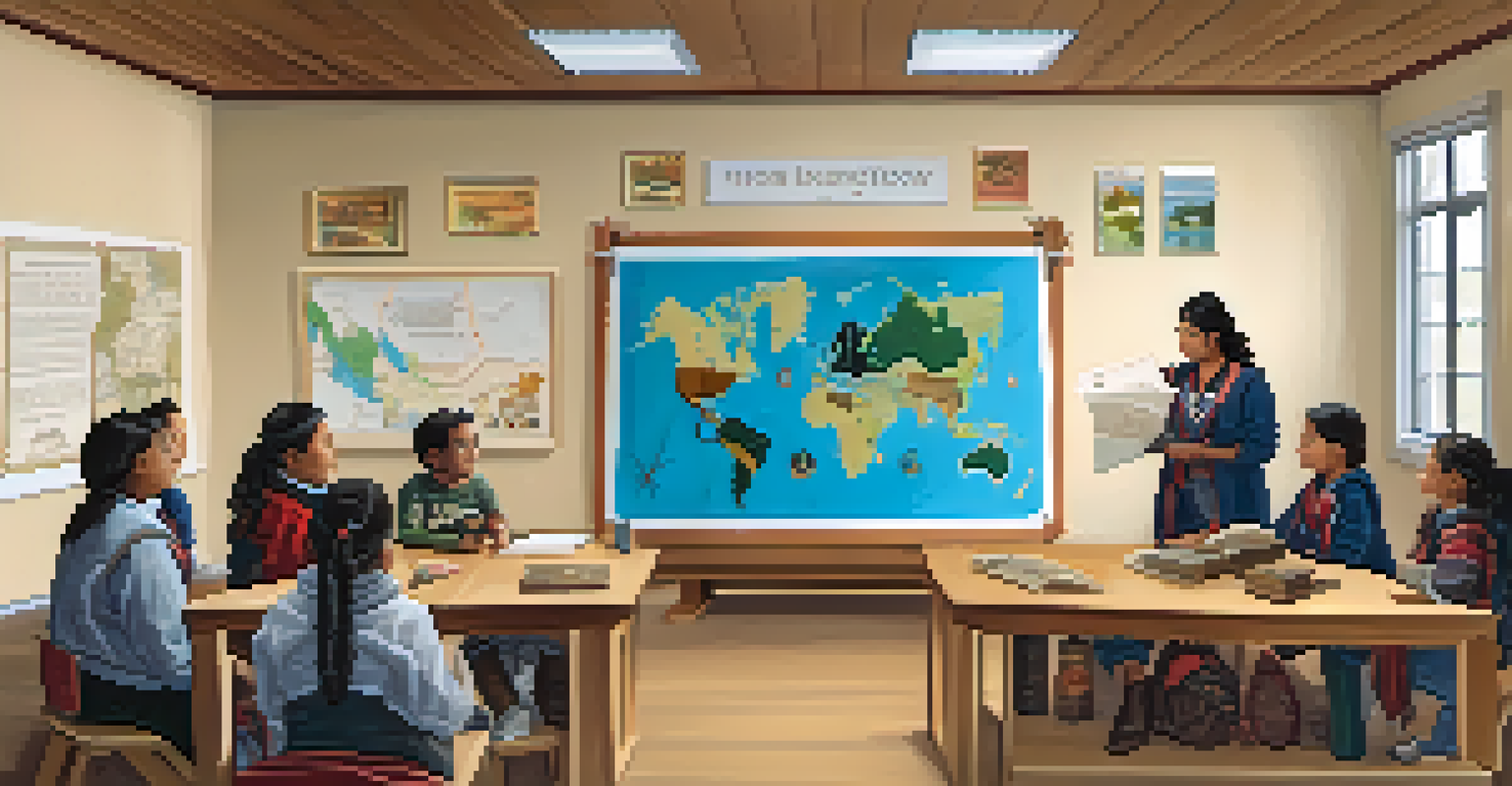The Importance of Place-Based Education in Communities

What is Place-Based Education and Why Does It Matter?
Place-based education (PBE) is a teaching approach that connects learning to the local environment and community. It emphasizes hands-on, experiential learning that often involves real-world projects, making education more relevant and engaging for students. This method not only helps students understand their surroundings but also fosters a sense of responsibility towards their community.
Education is not filling a bucket, but lighting a fire.
By focusing on local culture, history, and ecology, PBE encourages students to explore and appreciate their unique context. For instance, a student studying the history of their town might conduct interviews with local elders, gaining insights that textbooks can’t provide. This kind of learning transforms students into active participants in their community rather than passive recipients of information.
Moreover, PBE can lead to improved academic performance. Research has shown that when students engage with their local environment, they tend to retain information better and develop critical thinking skills. In essence, PBE creates a dynamic learning experience that resonates with students on multiple levels.
Building Stronger Community Relationships Through Education
One of the significant benefits of place-based education is its ability to strengthen community ties. When students work on projects that address local issues, they often collaborate with community members, including businesses, non-profits, and local governments. This collaboration helps students develop a sense of belonging and fosters a shared commitment to community well-being.

For example, a school might partner with a local environmental group to create a community garden. Not only do students learn about sustainable practices, but they also interact with community members who share their knowledge and expertise. These relationships can lead to future mentoring opportunities and a lifetime of civic engagement.
Engagement Through Local Learning
Place-based education enhances student engagement by connecting learning to their community, making it more relevant and exciting.
Additionally, as students engage with community members, they can bring fresh perspectives and ideas to longstanding challenges. This reciprocal exchange of knowledge and skills enriches both students and community members, creating a vibrant ecosystem of learning and growth.
Enhancing Student Engagement and Motivation
Place-based education naturally enhances student engagement by making learning relevant and exciting. When students see the direct impact of their work on their community, they are more likely to invest time and effort into their studies. This real-world connection often transforms the learning experience from a chore into an adventure.
The environment is where we all meet; where we all have a mutual interest; it is the one thing all of us share.
For instance, instead of reading about environmental science in a textbook, students might participate in a local clean-up initiative. They can observe the effects of pollution firsthand and discuss potential solutions with experts. Such experiences not only deepen understanding but also ignite a passion for learning that can last a lifetime.
Moreover, PBE allows for diverse learning styles to flourish. Whether through field trips, hands-on projects, or community collaborations, students can engage with material in ways that resonate with them personally. This flexibility encourages a love for learning that traditional education methods might not always evoke.
Promoting Cultural Awareness and Diversity in Learning
Another vital aspect of place-based education is its role in promoting cultural awareness. By integrating local history and traditions into the curriculum, students gain a deeper understanding of their community's diversity. This approach helps cultivate respect and appreciation for different cultures among students.
For example, a PBE curriculum might include studying the indigenous history of a region, allowing students to connect with the local tribes and learn about their traditions and values. Such experiences enrich students’ perspectives and prepare them to navigate a diverse world with empathy and understanding.
Building Community Connections
PBE fosters strong community relationships as students collaborate on local projects, enriching both their learning and community ties.
Additionally, place-based education encourages students to explore their identities within the context of their community. This exploration can lead to greater self-awareness and confidence, as students recognize their unique contributions to the cultural tapestry of their area.
Encouraging Environmental Stewardship and Sustainability
Place-based education inherently promotes environmental stewardship by connecting students with their natural surroundings. Through hands-on experiences, students learn about local ecosystems and the importance of sustainability. This connection fosters a sense of responsibility towards preserving their environment for future generations.
For instance, students might participate in a project that focuses on restoring a local river or wetland. They not only gain practical skills but also understand the ecological significance of their actions. This real-world application of knowledge empowers students to become advocates for environmental conservation.
Furthermore, as students learn about sustainability in their own communities, they are more likely to carry these principles into their daily lives. This shift can lead to lasting changes in behavior, making students not just learners but also proactive stewards of their environment.
Fostering Critical Thinking and Problem-Solving Skills
Place-based education challenges students to think critically and solve real-world problems. Rather than relying solely on theoretical knowledge, students are tasked with addressing genuine issues within their communities. This practical approach encourages them to analyze situations, consider multiple perspectives, and develop innovative solutions.
For example, a project aimed at reducing traffic congestion in a neighborhood might require students to survey residents, analyze traffic patterns, and propose viable solutions. Such experiences not only hone critical thinking skills but also teach students the value of collaboration and communication.
Promoting Critical Thinking Skills
Through real-world problem-solving in their communities, place-based education cultivates critical thinking and adaptability in students.
Moreover, as students engage in project-based learning, they develop resilience and adaptability. They learn to navigate obstacles and adjust their strategies, skills that are invaluable in both academic and professional settings. Ultimately, PBE prepares students for the complexities of real life, equipping them with the tools they need to succeed.
The Role of Educators in Place-Based Education
Educators play a crucial role in facilitating place-based education. They must be willing to step outside traditional classroom boundaries and embrace the community as a living classroom. This shift requires creativity, flexibility, and a commitment to ongoing learning and collaboration with community partners.
Teachers can enhance the PBE experience by incorporating local experts into their lessons, whether through guest lectures, field trips, or collaborative projects. This connection to the community not only enriches the curriculum but also provides students with role models and mentors who can inspire them.

Additionally, educators must foster a culture of inquiry and exploration within their classrooms. By encouraging students to ask questions and seek answers in their community, teachers can cultivate a spirit of curiosity and engagement that drives meaningful learning experiences.